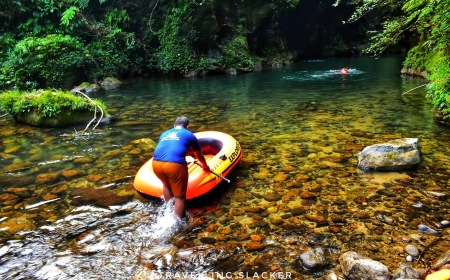How to Attend Oakland Native Hawaiian Fest
How to Attend Oakland Native Hawaiian Fest The Oakland Native Hawaiian Fest is more than a cultural celebration—it is a living tribute to the resilience, artistry, and ancestral wisdom of Native Hawaiians living in the Bay Area. Held annually in Oakland, California, this event brings together community members, artists, educators, and visitors from across the nation to honor Hawaiian traditions th
How to Attend Oakland Native Hawaiian Fest
The Oakland Native Hawaiian Fest is more than a cultural celebration—it is a living tribute to the resilience, artistry, and ancestral wisdom of Native Hawaiians living in the Bay Area. Held annually in Oakland, California, this event brings together community members, artists, educators, and visitors from across the nation to honor Hawaiian traditions through music, dance, food, language, and storytelling. For those unfamiliar with Hawaiian culture or the logistics of attending such an event, navigating the experience can feel overwhelming. This comprehensive guide provides everything you need to know to attend, engage with, and honor the Oakland Native Hawaiian Fest in a meaningful, respectful, and well-prepared way.
Unlike generic festivals that prioritize spectacle over substance, the Oakland Native Hawaiian Fest is rooted in deep cultural preservation. Organized by Native Hawaiian community leaders, local kūpuna (elders), and cultural practitioners, the event serves as both a homecoming for the Hawaiian diaspora and an educational gateway for outsiders seeking authentic understanding. Attending isn’t just about showing up—it’s about participating with intention, humility, and awareness of the historical and spiritual context behind every ritual, chant, and offering.
This guide will walk you through the practical steps to attend the festival, offer best practices for respectful engagement, recommend essential tools and resources, share real-life examples from past attendees, and answer common questions. Whether you’re a first-time visitor, a longtime supporter, or someone simply curious about Hawaiian culture, this tutorial ensures you leave the festival not just as an observer—but as a mindful participant in a living tradition.
Step-by-Step Guide
Attending the Oakland Native Hawaiian Fest requires more than just showing up on the day of the event. Successful participation begins weeks in advance and continues through thoughtful reflection afterward. Follow these seven detailed steps to ensure a seamless, respectful, and enriching experience.
Step 1: Confirm the Date and Location
The festival typically takes place in late summer—often in August—though dates may vary slightly year to year. It is held at Lake Merritt Amphitheater or the nearby Oakland Museum of California grounds, depending on the year’s planning. The event is free and open to the public, but space is limited during peak hours, so arriving early is strongly advised.
To confirm the exact date and venue, visit the official website of the Native Hawaiian Community Coalition of the Bay Area (NHCCBA) or follow their verified social media channels on Instagram and Facebook. Avoid relying on third-party event listings, as they may contain outdated or inaccurate information. The official site will also provide details on parking, public transit options, and accessibility accommodations.
Step 2: Register for Events (If Required)
While general admission is open, certain components of the festival—such as hula workshops, language immersion circles, or poi-making demonstrations—require pre-registration due to limited capacity. These sessions often fill up within days of opening registration. Visit the festival’s registration portal, usually hosted on Eventbrite or a dedicated NHCCBA form, and sign up early. You’ll need to provide your name, email, and sometimes your connection to Hawaiian culture (e.g., “descendant,” “supporter,” “learner”).
Registration is not just a formality—it helps organizers prepare culturally appropriate materials, allocate space, and ensure that participants receive accurate, localized instruction. If you’re unsure whether you qualify for a specific session, reach out via the contact form on the official site. There are no fees, but registration is mandatory for participation in these intimate sessions.
Step 3: Learn Basic Hawaiian Protocol
Understanding and honoring Hawaiian cultural protocols is non-negotiable. Before attending, familiarize yourself with key practices:
- ʻAloha—This is not simply a greeting. It is a way of life rooted in compassion, mutual respect, and interconnectedness.
- Kapu—Some areas or rituals may be restricted to Native Hawaiians or those with specific lineage. Respect signage and verbal cues. If unsure, ask politely: “May I observe?”
- Hoʻokupu—Offerings are often made at the beginning of ceremonies. These may include leis, flowers, or handmade items. If you wish to offer something, bring a lei made from local, non-invasive plants (avoid plumeria or orchids unless sourced sustainably). Never bring food or items with synthetic materials.
- Footwear—Many ceremonies occur on bare earth or grass. Remove shoes before entering ceremonial spaces, as indicated by signs or kūpuna guidance.
Take time to read “A Guide to Hawaiian Cultural Protocols” by the Office of Hawaiian Affairs or watch short educational videos from the Bishop Museum. These resources are free and widely shared by the festival organizers.
Step 4: Prepare Your Attire
What you wear matters. While casual attire is acceptable for general areas, dressing with cultural sensitivity enhances your experience and shows respect.
For men: Aloha shirts, linen pants, or shorts with a modest top are appropriate. Avoid wearing shirts with offensive slogans, tribal motifs from other cultures, or Hawaiian-print swimwear. For women: Muʻumuʻu, long skirts, or dresses with sleeves are ideal. Avoid revealing clothing, especially during ceremonies.
Leis are welcome and often gifted upon arrival. If you bring your own, ensure it is made from natural materials and not mass-produced. If you’re unsure, wait to receive one from a cultural practitioner—it’s a gesture of welcome, not obligation.
Footwear: Bring sandals or flip-flops you can easily remove. Many attendees carry a small bag to store shoes while participating in ground-based activities.
Step 5: Plan Your Transportation and Arrival
Oakland is well-served by public transit. The festival is accessible via BART (Bay Area Rapid Transit) to the Lake Merritt station, followed by a 10-minute walk. Several AC Transit bus lines (including the 12, 14, and 18) also stop nearby.
If driving, parking is limited on-site. Use the City of Oakland’s parking map to locate public lots within walking distance. Avoid parking on residential streets without permits—this causes tension with local residents. Carpooling is encouraged and often organized through the festival’s Facebook group.
Arrive at least 45 minutes before the opening ceremony (usually at 10:00 a.m.). This allows time to navigate entry points, receive a festival map, and acclimate to the atmosphere. Late arrivals may miss the important oli (chant) that opens the event.
Step 6: Engage Mindfully During the Event
Once inside, follow these guidelines to engage respectfully:
- Do not touch ceremonial objects, drums, or altars unless invited.
- Stand quietly during oli and hula. Applause is appropriate after performances, but not during.
- Ask before photographing individuals, especially elders or children. Always offer to share the photo if you take it.
- Do not record chants or prayers without written permission from the kūpuna leading the ceremony.
- If you feel moved to cry or pray, do so quietly. This is a sacred space.
Listen more than you speak. Many attendees are there to reconnect with their heritage after generations of displacement. Your presence should honor their journey, not center your own curiosity.
Step 7: Reflect and Give Back
Leaving the festival isn’t the end—it’s the beginning of deeper engagement. Take time after the event to reflect:
- Write down what you learned, what moved you, and what questions arose.
- Support Native Hawaiian artists and vendors by purchasing their work. Avoid reselling items; buy to honor, not to profit.
- Donate to the NHCCBA or local Hawaiian language immersion schools. Even $10 helps sustain their work.
- Share your experience on social media—but only if it centers Native voices. Tag official organizers, not just yourself.
- Volunteer for next year’s event. Many roles—setup, translation, child care—are filled by community members.
This final step transforms attendance into advocacy. You become part of the ecosystem that keeps Hawaiian culture alive outside of Hawaiʻi.
Best Practices
Attending the Oakland Native Hawaiian Fest is not a tourist activity—it is a cultural encounter that demands ethical responsibility. Below are best practices distilled from years of community feedback, organizational guidelines, and participant testimonials.
Practice Cultural Humility, Not Curiosity
Curiosity often leads to intrusive questions: “Are you really Hawaiian?” or “How do you say ‘I love you’ in Hawaiian?” These questions, while well-intentioned, place the burden of education on Native people who are there to celebrate, not to be interrogated.
Instead, practice cultural humility: acknowledge you are a guest. Listen deeply. Read before you ask. If you’re unsure about something, observe quietly and wait for an invitation to participate.
Support, Don’t Appropriation
Hawaiian culture has been commodified for decades—from mass-produced “tiki” decor to Halloween costumes. Avoid anything that reduces sacred symbols to fashion.
Do not wear kāhili (feather standards) as accessories. Do not use the word “aloha” as a casual farewell on social media without context. Do not buy mass-produced “Hawaiian” shirts from chain stores. Instead, seek out Native Hawaiian-owned businesses at the festival and support them directly.
Respect the Sacred
Many rituals at the festival involve offerings to ancestors, prayers to the land, and chants passed down through generations. These are not performances—they are spiritual acts. Never treat them as entertainment.
If you see a kūpuna quietly sitting with a lei at a small altar, do not approach. Do not ask for photos. Do not interrupt. Let them be. Their presence is sacred.
Speak Up Against Misinformation
If you hear someone misrepresent Hawaiian culture—calling hula a “dance show” or saying “Hawaiians don’t have a written language”—politely correct them. Use facts: Hawaiian has a rich oral and written tradition dating back to the 1820s, and hula is a form of storytelling, not mere entertainment.
Be the person who helps others understand—not the one who laughs or stays silent.
Bring Your Children with Intention
Children are welcome and often participate in youth hula or language games. But bring them prepared. Explain beforehand that this is not a carnival—it’s a ceremony. Teach them to be quiet during chants and to accept offerings with both hands.
Many families use the festival as a teaching moment. If you’re a parent or guardian, ask organizers for a “Family Guide to the Fest” pamphlet. It includes age-appropriate explanations of each activity.
Leave No Trace
The festival grounds are treated as sacred land. Even if it’s a park, treat it with reverence. Pick up your trash. Do not leave bottles, wrappers, or personal items behind. If you see litter, pick it up—even if it’s not yours.
Some attendees bring reusable water bottles and cloth bags. This honors the Hawaiian value of kuleana (responsibility) to the ʻāina (land).
Use Language with Care
Learn to pronounce key Hawaiian words correctly:
- ʻAloha
- Kūpuna
- ʻĀina
- Hoʻokupu
- Oli
Use the ʻokina (glottal stop) and kahakō (macron) when writing. These are not optional—they are essential to meaning. “Ko” means “mine,” but “kō” means “sugarcane.” Mispronunciation can unintentionally disrespect the language.
Use online tools like the ʻŌlelo Online Dictionary or the Hawaiian Language App by the University of Hawaiʻi to practice.
Tools and Resources
Preparing for the Oakland Native Hawaiian Fest is made easier with the right tools. Below is a curated list of free, community-endorsed resources to help you engage meaningfully before, during, and after the event.
Official Festival Resources
- Native Hawaiian Community Coalition of the Bay Area (NHCCBA) – nhccba.org – The primary organizer. Offers event calendars, registration links, and cultural guidelines.
- Annual Festival Program PDF – Downloadable from the NHCCBA site. Includes schedule, vendor list, and performer bios. Print a copy or save to your phone.
- Live Stream Archive – Past festivals are archived on the NHCCBA YouTube channel. Watch to understand the flow and tone of the event.
Cultural Education Tools
- ʻŌlelo Online Dictionary – oleloonline.com – The most comprehensive Hawaiian language dictionary, developed by the University of Hawaiʻi.
- University of Hawaiʻi Press – “Hawaiian Cultural Protocols” – Free downloadable PDF available through their education portal. Covers etiquette, protocols, and history.
- Bishop Museum – “Living Culture” Series – Short video series on YouTube explaining hula, chant, and navigation. Ideal for beginners.
- Hawaiian Language App – Available on iOS and Android. Teaches pronunciation, grammar, and common phrases. Includes audio from native speakers.
Transportation and Logistics
- AC Transit Trip Planner – actransit.org – Real-time bus schedules and route maps to Lake Merritt.
- City of Oakland Parking Map – oaklandca.gov/parking – Shows public lots, street parking rules, and payment options.
- Google Maps “Accessibility” Filter – Use to find ADA-compliant entrances, restrooms, and seating areas near the festival.
Community Support Networks
- Native Hawaiian Youth Council – Offers volunteer opportunities and mentorship for young attendees.
- Bay Area Hawaiian Alumni Network – Connects alumni of Hawaiian immersion schools living in California. Great for networking.
- ʻOhana for ʻĀina – A local group that organizes pre-festival cleanups and food drives. Join them to give back.
Recommended Reading
- “The Hawaiian Renaissance” by Noenoe K. Silva – Explores the revival of language and culture in Hawaiʻi and its diaspora.
- “Hawaiian Art and Material Culture” by David W. Forbes – Detailed guide to traditional crafts, textiles, and symbolism.
- “Aloha Spirit: Hawaiian Law and Thought” by Jonathan Kay Kamakawiwoʻole Osorio – A profound look at Hawaiian values as legal and ethical frameworks.
Apps for On-Site Use
- SoundHound – Useful for identifying chants you hear. Upload a recording and search for similar oli.
- Google Translate (Hawaiian Language Pack) – Limited but helpful for basic phrases. Always double-check with the ʻŌlelo Online Dictionary.
- Google Maps Offline Mode – Download the Lake Merritt area before arriving. Cell service can be spotty during large events.
Real Examples
Real stories from past attendees reveal the transformative power of the Oakland Native Hawaiian Fest. These examples illustrate how intentionality, preparation, and humility turn attendance into deep cultural connection.
Example 1: Maria, 68, Second-Generation Hawaiian-American
Maria was born in Oakland to parents who migrated from Oʻahu in the 1950s. She grew up speaking English at home and never learned Hawaiian. At 65, she attended the festival alone, unsure if she belonged.
She sat quietly during the opening oli, tears streaming. A kūpuna noticed and gently offered her a maile lei. “You’re home,” the elder said. Maria later joined a Hawaiian language circle and now attends weekly lessons. “I didn’t come to learn a language,” she says. “I came to remember who I am.”
Example 2: Jamal, 22, College Student from Texas
Jamal had never met a Native Hawaiian before. He attended the festival after seeing a TikTok video of a hula performance. He arrived in a Hawaiian-print shirt and asked to take selfies with dancers.
After a quiet conversation with a volunteer, he realized his actions were disrespectful. He apologized, removed the shirt, and spent the rest of the day listening. He wrote a 1,500-word reflection for his anthropology class and now volunteers with the NHCCBA every year.
“I thought I was celebrating,” he says. “I didn’t realize I was trespassing. Now I understand: culture isn’t a costume. It’s a covenant.”
Example 3: The Rivera Family
A family of five from San Jose came with their two children, ages 7 and 9. They pre-registered for the children’s hula workshop and brought homemade poi (made from taro root they grew in their garden).
The children learned to chant a simple greeting. The parents donated $50 to the Hawaiian Language Immersion Fund. The family now hosts a monthly “Hawaiian Culture Night” at home, cooking traditional dishes and watching films from the Bishop Museum.
“We didn’t come to be tourists,” says the mother. “We came to plant seeds.”
Example 4: Dr. Lena Kanahele, Cultural Anthropologist
Dr. Kanahele, a non-Hawaiian scholar, has studied Pacific cultures for 30 years. She attends the festival every year—not to research, but to listen.
She brings her students, but only after requiring them to read five scholarly articles on Hawaiian sovereignty and displacement. She tells them: “If you can’t explain why this festival matters beyond aesthetics, you shouldn’t be here.”
Last year, she helped organize a panel on “Diaspora Identity in Urban Settings,” featuring three Native Hawaiian elders. The recording is now used in university curricula across the West Coast.
Example 5: The Koa Collective
A group of five young Hawaiian artists from the Bay Area formed “Koa Collective” after attending the festival in 2021. They created a mural at the event site depicting ancestral voyagers and modern-day community members.
The mural, painted with eco-friendly paint, still stands today. It includes QR codes linking to Hawaiian language lessons and donation pages. The collective now hosts monthly art jams at the festival.
“We didn’t wait for permission,” says one member. “We created the space we needed.”
FAQs
Is the Oakland Native Hawaiian Fest only for Native Hawaiians?
No. While the event centers Native Hawaiian voices and traditions, it is open to all who attend with respect and humility. Non-Hawaiians are welcome as guests, learners, and allies—but not as spectators or consumers.
Do I need to speak Hawaiian to attend?
No. However, learning a few basic phrases like “aloha,” “mahalo,” and “kiaʻi” (protector) shows respect. Many participants speak English, but the use of Hawaiian language is encouraged and celebrated.
Can I bring food or drinks?
You may bring water in a reusable bottle. Outside food is discouraged, as the festival features authentic Hawaiian cuisine from local vendors. Purchasing food supports the community and ensures cultural authenticity.
Are children allowed?
Yes. Children are welcome and often participate in youth activities. Parents are encouraged to supervise and teach cultural etiquette before attending.
Can I take photos?
Yes—but only with permission. Never photograph ceremonies, altars, or elders without asking. Always ask, “May I take a photo?” and offer to send them a copy if you do.
Is there wheelchair access?
Yes. The festival grounds are ADA-compliant. Accessible restrooms, seating, and pathways are clearly marked. Contact NHCCBA in advance if you require additional accommodations.
What if I accidentally offend someone?
If you realize you’ve made a mistake, apologize sincerely. Say, “I’m sorry. I didn’t understand.” Most Native Hawaiians appreciate humility over defensiveness. Avoid making excuses. Learn and do better.
How can I support the festival year-round?
Donate to NHCCBA, volunteer, attend their monthly meetings, or help spread accurate information about Hawaiian culture. Follow their social media and share their posts. Support Native Hawaiian-owned businesses in your area.
Why is this festival in Oakland and not Hawaiʻi?
Thousands of Native Hawaiians live in the Bay Area due to historical migration patterns, military service, and economic opportunity. The festival preserves culture far from the homeland. It’s a testament to resilience, not displacement.
Is there a fee to attend?
No. The festival is free and funded through community donations, grants, and sponsorships from local Native organizations. No one is turned away for lack of funds.
Conclusion
Attending the Oakland Native Hawaiian Fest is not a checklist—it’s a commitment. It requires preparation, humility, and a willingness to listen more than you speak. This festival is not a performance for outsiders. It is a sacred gathering, a homecoming, and a declaration of survival.
By following the steps outlined in this guide—registering early, learning protocol, dressing respectfully, engaging mindfully, and giving back—you honor not just the event, but the people who make it possible. You become part of a continuum: one that connects ancestral voyagers to modern-day keepers of culture, from the islands of Hawaiʻi to the shores of the Bay Area.
Remember: You do not need to be Hawaiian to be a good guest. But you do need to be intentional. You do not need to know every chant to feel its power. You only need to show up—with an open heart and a quiet mind.
As the kūpuna say: “E ola ka ʻāina, e ola ka ʻōlelo, e ola ka hoʻoponopono.” May the land live, may the language live, may reconciliation live.
Go with aloha. Leave with responsibility.





























